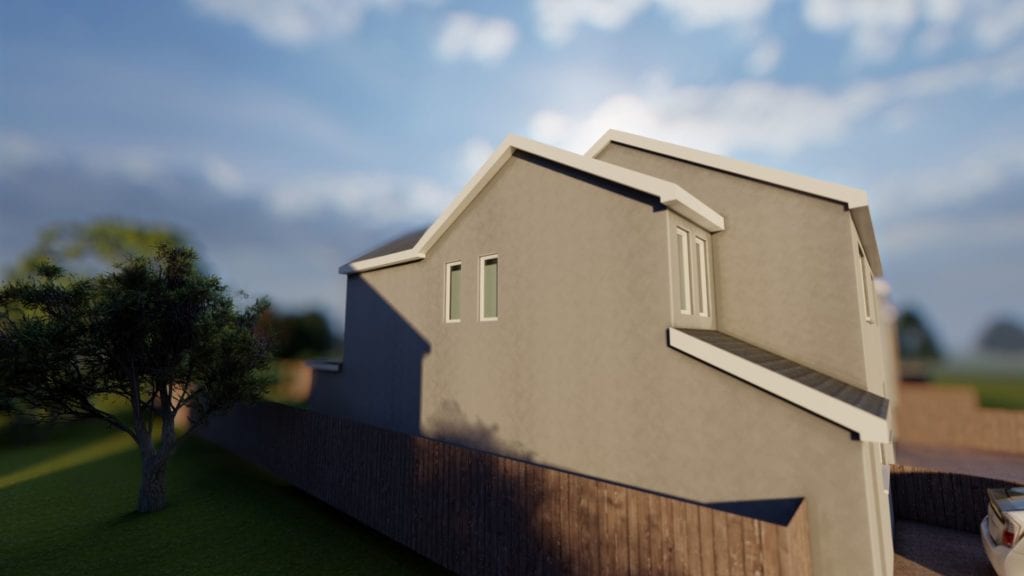
Do I Need Planning Permission
For My Extension
TIPS AND TRICKS FROM OUR PROPERTY EXPERTS

Check The Status Of Your Permitted Development or 'PD' Rights
Assuming your home has its permitted development rights intact (a quick call into your Councils Planning Department will confirm this) then in all probability you will not need planning permission for a single storey rear extension.
If you cant get through to your Councils planning department, some Local Authorities publish their planning constraints maps online.
Here you will be able to fill out a quick form, add your post code and find out instantly if there are any planning constraints on your property that may affect your permitted development rights.
Another method of checking is to do a quick search through your Councils Planning Applications list for other houses in your street. If others have carried out similar works and obtain a lawful development certificate for the works then it is incredibly likely that you will be able to do the same.
If your planning search reveals that your permitted development rights have been removed its not the end of the world, it simply means that you will need to apply for householder planning consent instead.
Providing your proposals are inline with what you would have been allowed under your permitted development rights then the chances of obtaining householder approval is very good.
So moving onwards and assuming you have your permitted development rights – Lets give you a brief idea of what they are and what it means to your home extension project:
Permitted development is a part of the planning permission process whereby you are allowed to make changes to your home and how much space it has, all without applying to your local authority for full householder planning permission to make the changes.
There are quite a few limitations within permitted development that you need to keep in mind and if you don’t meet the requirements and you go ahead with your plans, you could be in trouble.
In a worse case scenario you will have to take down the extension that you have paid out to have built on your property.

Permitted Development Extensions
Check out my video on Extensions Without Planning Permission Below:
Prior Approval Scheme - Extensions
Check out my video on larger home extensions (upto 8m) under the Prior Approval Scheme:
Why An Extension?
There are a number of reasons why you might want to build an extension on your property. You may realise that it is too small for an expanding family, you may want to increase its value, or you may be looking at creating space for a hobby or change in job.
Building an extension is not usually something that you should tackle yourself. It is a task that you need to arrange to have carried out by a professional builder. Not only are they going to be able to advise you about what is possible and not possible, but also ensure that your extension is built to the best standard possible.
Aside from thinking about which builder is right for you and your needs, you also need to think about the regulations and laws that surround having an extension built on your property. The main one of these has to be planning permission and whether you need to apply for this.
Planning permission will really depend on your own personal circumstances, and what you want built. However, there are certain rules that you may want to keep in mind. To help you to make sense of whether you need to apply for planning permission, here are some of the things that you need to keep in mind.
What Things Change Whether You Can Have An Extension Built On Your Property Within Permitted Development?
As we have already mentioned, whether or not you apply for planning permission will largely depend on your property and what you are trying to build. However, there are some things that you can keep in mind which may mean that you are covered by the permitted development rules.
The size of the extension that you wish to built should be no bigger than half of the land that was originally around your home. This even includes land that you may have already had built on, so, if your homes previous owner has had any work carried out, or you have since you bought the property, then this could impact whether or not your extension requires permission or not.
If it is going to be likely that your extension takes your property closer to a public walkway, either by the front or the side of the property, then you are going to need to apply for planning permission in order to have the extension built. Equally, if the extension is going to be higher than the existing highest part of your house, then this also will require permission.
Those extensions that are going to be built on the side of your property, then you need to ensure that they are single storey. They cannot be any higher than 4 metres and they must not be any wider than half the width of your original property.
Finally, when you are considering having the extension built you need to ensure that the materials that are used are the same that has been used in your original property. If the materials look
different to those used in your home, then you are going to need to get planning permission for the extension to be built.
These are not the only things that you need to think about when it comes to planning an extension on your home, however, they are the main ones that you are going to need to keep in mind in order to make sure that you are within the law and you are not going to get into trouble.
This guide should have helped you to work out whether or not you need to apply for planning permission or if you fit into permitted development for your extension plans. However, you cannot always be sure. If you are worried that you have misunderstood the rules or that your property doesn’t quite meet them, then you are going to want to speak to an expert. They can advise you not only whether or not your extension plans are going to be possible, but also whether or not they are going to mean that you should apply for planning permission in order to have it built.
Rear Extensions - The Rules
If you are adding an extension to the rear of your home and it is within 2m of a boundary wall or fence then the maximum eaves height should be no greater than 3m.
“In case you were unsure what the ‘eaves’ is – This is the underside of the soffit or fascia that usually holds the rain water gutter for the extension roof”
The height to the top of the roof must not exceed 4m at any point.
This measurement is taken to the highest point of the roof.
If you live in a detached house then your extension can extend beyond the rear wall upto a maximum of 4m.
For semi detached and terraced houses the depth of your extension can be no greater than 3m
Where not on designated land (Article 2(3)) or a site of special scientific interest this limit is increased to 8m for detached houses and 6m for all others.
Please note however that in order to take advantage of these ‘doubled up’ permitted development rights you will need to make an application under the prior notification scheme’ which is a 42 day process in which basic plans and information are submitted into your local authority and your neighbours are consulted and given 42 days to lodge any objections.
Something you would need to consider when opting for the prior approval scheme is that unlike normal permitted development you are not guaranteed approval which is why you MUST apply for prior approval BEFORE any works are carried out on site.
Just one neighbour objection under this scheme would result in Prior Approval being required and that basically translates into you then needing to apply for Planning Permission.
Something else you would need to consider when adding an extension to the rear of your home is the question: what constitutes a rear wall in the first place?
“Well that’s easy, it’s the rear wall across the back of my house right?”
The answer is a not quite as straight forward as this. You see, when defining what parts of a house would be classified as rear wall it was decided that:
The rear wall applies to the rear wall of the building on the day that it was built, or for older properties as it was on 1st July 1948.
This means that if your property benefitted from a side extension or garage added in the 50s, or later then the area behind this would NOT fall under permitted development and would of course require planning consent.
Side Extensions - The Rules
If you are adding your new extension to the side of your home and it is within 2m of a boundary wall or fence then the maximum eaves height should be no greater than 3m.
“In case you were unsure what the ‘eaves’ is – This is the underside of the soffit or fascia that usually holds the rain water gutter for the extension”
The height to the top of the roof must not exceed 4m at any point.
There are no stipulations on how close or far away from the boundary wall or fence you are allowed to build your new conservatory provided the total width of the extension is no greater than 50% of the width of your home.
Don’t forget, when we are referring to the width of your home, it means the width of your original house on the day that it was built or as it stood on 1st July 1948. Any previous extensions added, even if they were carried out many decades ago they will have an effect on how wide you will be able to build your new conservatory.

Side and Rear Extensions - The Rules
If you are proposing to build to the side and rear of your property as shown in the image above then this would be classed as a wrap around extension and will in all instances require planning permission.
Pro Tip: Match Your Materials
In the image above the orginal house has a render finish therefore in order to comply with Permitted Development order the extension also needed to be rendered to match the original home.
If you are planning to add a rendered extension to a brick building or visa versa then this would require planning consent.
Its a mistake we encounter time and again, and has resulted in many retrospective planning applications.
Adding An Extension To My Home Without Planning Permission – A Cautionary Tale
So you have gone and added a conservatory to your home and a few years down the line you decide to sell up and move to a new home.
You find a buyer and begin the sales process. Half way through the buyers solicitor carries out the standard checks and can see no record of planning permission being sought (or given) for your extension.
It is at this stage that we receive many a call from a very stressed homeowner asking how quickly we can provide a set of drawings and apply for a lawful development certificate for their extension.
This situation is not ideal for the individual looking to sell as they could potentially lose a buyer. It is also far from ideal for us as we will embark on a project where we are being chased continuously through the council process by the seller who will be under considerable pressures of their own.
In an ideal situation, a lawful development will be granted and the sale will go through.
What happens however if one of the common mistakes mentioned previously have taken place?
The short answer is that the lawful development certificate will be refused and then the seller is thrown into a whole different ball game of applying for retrospective planning permission for an unlawful conservatory and in all likelihood will also lose their buyer.
How Could This Have Been Avoided?
So you have read all the way down to the bottom of this Article and are now looking for a way to add an extension to your home without planning permission that is totally risk free.
We have three magic words for you and they are ‘Lawful Development Certificate’
Basically a lawful development certificate is a legal document that your council will provide you with to confirm that your extension does indeed comply with Permitted Development and is exempt of requiring planning permission.
All you need to get your hands on a lawful development certificate is to send a set of basic plans into the council together with a fee of £126.00 and the council will look over the drawings and issue a certificate confirming everything is in order.
A register of your lawful development certificate will be added to your property record so that it shows up in any searches should you ever decide to sell your home.
In order to make it easy for anyone needing a lawful development certificate we have created a very handy fixed price package that includes everything you need to your extension through planning / permitted development.
About
Planning Permission Drawings For Extensions, Loft Conversions, Outbuildings, Conservatories, Porches, Garagage Conversions and Much Much More… We are The Number 1 Online Architectural Services Company For Planning Permission Drawings in The UK!
